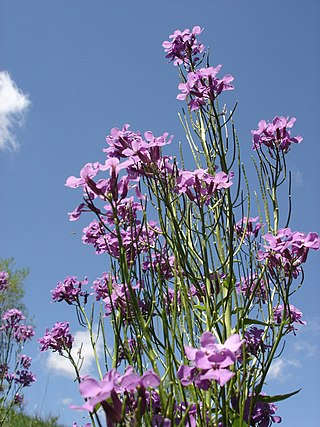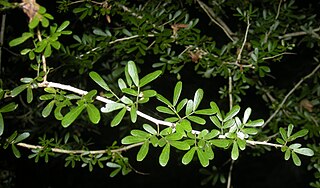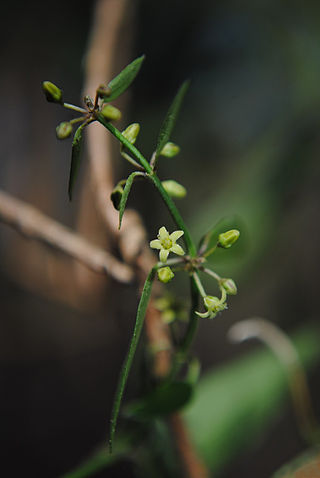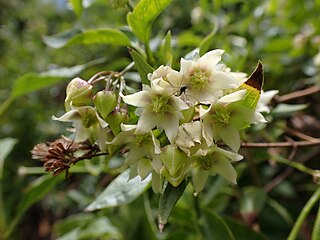
The Asclepiadoideae are a subfamily of plants in the family Apocynaceae. Formerly, they were treated as a separate family under the name Asclepiadaceae, e.g. by APG II, and known as the milkweed family.

Hesperis is a genus of flowering plants in the family Brassicaceae. Most are native to Eurasia, with several endemic to Greece and Turkey. Many plants of this genus bear showy, fragrant flowers in shades of purple and white. One of the more widely known species is the common garden flower Hesperis matronalis. The genus name Hesperis was probably given because the scent of the flowers becomes more conspicuous towards evening.

Cynanchum is a genus of about 300 species including some swallowworts, belonging to the family Apocynaceae. The taxon name comes from Greek kynos and anchein, hence the common name for several species is dog-strangling vine. Most species are non-succulent climbers or twiners. There is some evidence of toxicity.

Oxypetalum is a genus of flowering plants in the family Apocynaceae, first described with this name in 1810. The genus is native to South America.

Archidendropsis is a genus of flowering plants in the family Fabaceae. It includes 11 species, which are native to Australia, New Guinea, the Bismarck Archipelago, Solomon Islands, and New Caledonia.

Matelea is a genus of flowering plants in the family Apocynaceae. It contains about 200 species, which are commonly known as milkvines. Some people consider Chthamalia to be a synonym to or a subgenus of Matelea.

Funastrum is a genus of flowering plant now in the family Apocynaceae. The name is derived from the Latin word funis, meaning "rope", and astrum, alluding to the twining stems. Members of the genus are commonly known as twinevines.
× Galiasperula is a monotypic genus of flowering plants in the family Rubiaceae. The genus contains only one species, × Galiasperula ferdinandi-coburgii, which is a hybrid of Asperula purpurea and Galium degenii. It is found in south-east Europe.

Orthosia is a genus of plants in the family Apocynaceae, first described as a genus in 1844.
Tassadia is a genus of plants in the family Apocynaceae, first described as a genus in 1844. It is native primarily to South America, with one species extending north into Central America, S Mexico, and Trinidad.

Jobinia is a genus of flowering plants of the family Apocynaceae first described in 1885. It is native to South America and Central America.
Kerbera is a genus of plants in the family Apocynaceae first established in 1885. It contains only one known species, Kerbera eichleri, endemic to Brazil.

Peplonia is a group of plants in the family Apocynaceae first described as a genus in 1844. The entire genus is endemic to Brazil.

Trichloris is a genus of New World plants in the grass family.
× Aegilotriticum is a nothogenus of flowering plants in the family Poaceae. They are the result of crosses between species of two distinct grass genera, Aegilops (goatgrasses) and Triticum (wheat). This type of intergeneric hybridization is quite rare, and is indicated by a multiplication symbol before the name. The name Aegilotriticum is an example of a portmanteau word, a combination of the two parents' names. This genus has at least 7 species.
Sisymbrium volgense is a species of flowering plant belonging to the family Brassicaceae.
Ibatia is a genus of flowering plants belonging to the family Apocynaceae.
Exhalimolobos is a genus of flowering plants belonging to the family Brassicaceae.

Ruehssia is a genus of plants in the family Apocynaceae. It is also in the Asclepiadoideae subfamily and Marsdenieae tribe.










